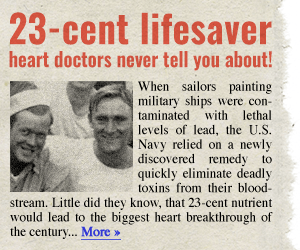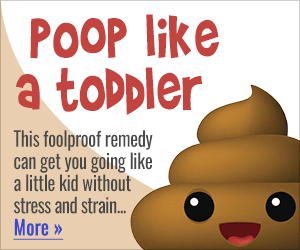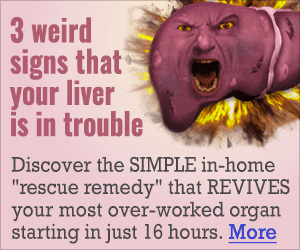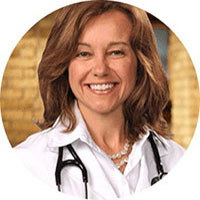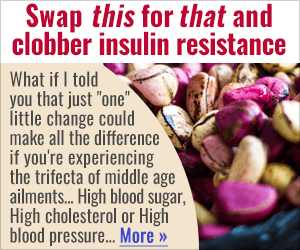Get Easy Health Digest™ in your inbox and don’t miss a thing when you subscribe today. Plus, get the free bonus report, Mother Nature’s Tips, Tricks and Remedies for Cholesterol, Blood Pressure & Blood Sugar as my way of saying welcome to the community!
Menopause and the big lie: The facts they left out

This is part 3 of a series. Click here for the previous installments.
I remember watching the Women’s Health Initiative (WHI) investigators present their data at a major cardiology conference. The room was packed. You could have heard a pin drop when the study’s findings were finally revealed.
I also remember all of us rushing back to our practices and immediately de-prescribing HRT. After all, the relative risk of heart attack was 32% higher in HRT users! Breast cancer up 26%! Blood clots up 200%!!
In one fell swoop, HRT was pronounced dead. Not just estrogen plus progesterone. All of it. Period. And any physician prescribing it could be risking a malpractice claim — or even being reported to their medical board.
Meanwhile, the media was having a field day. This was the most provocative medical news to come out in a very long time. The story was everywhere!
What the WHI Data Left Out
But here’s the thing: what we didn’t realize at the time — what the investigators chose to de-emphasize — were the many shortcomings of this data.
First, the vast majority of women were over 60 years of age at time of enrollment — many were in their 70s. Meaning, they started HRT 10 to 20 years after their last period.
Second, the type of hormone cocktail used for the trial was more like what’s in a birth control pill and VERY different from contemporary HRT formulations.
And third, large numbers of participants dropped out over the course of the trial.
In other words, we studied the wrong women, had them on the wrong treatment, and ended up with only partial data on what happened!
Understanding Relative Risk vs. Absolute Risk
Then there’s the matter of focusing on relative risk of negative health outcomes — which can be deceiving in terms of real impact. For example, if 10 out of 10,000 people develop a liver function abnormality while taking a placebo but 15 out of 10,000 develop it while taking a drug, the relative risk of liver problems is 50% higher in drug users (5 more compared to 10 baseline). Even though the absolute risk of developing a liver issue in drug users is only 0.05% (5 extra out of 10,000), translating to 1 extra abnormal lab test for every 2000 people treated, actually quite low.
Breast Cancer Risk in Context
In the WHI, the absolute increase in the chance of developing breast cancer was 0.1% in estrogen plus progesterone users, which is one extra breast cancer case for every 1,000 women on HRT. That’s not zero, but it’s also far from a guarantee that HRT users will develop breast cancer during their lifetimes.
The other piece of data that received little attention was that there was no difference in the chance of dying from breast cancer regardless of whether a woman took HRT.
Subsequent data also revealed NO increased breast cancer risk in women who took estrogen alone (which is appropriate only for those who no longer have a uterus).
Revisiting Cardiovascular and Blood Clot Risks
The WHI investigators also did not clearly point out that once other confounding factors were considered, differences in cardiovascular event rates largely disappeared. So HRT is not dangerous for the heart.
And although the risk of developing a blood clot was higher when taking hormone therapy — no argument there — this finding is irrelevant today because contemporary HRT is not associated with increased clotting risk.
Overlooked Benefits of HRT
And this is probably the greatest disservice created by the WHI: There was almost no emphasis placed on the positive health outcomes found among participants using any form of HRT. These included very significant reductions in osteoporosis-related bone fractures and significantly lower colon cancer risk.
Ignoring Quality of Life Metrics
There was also no discussion about what withholding HRT meant for the women in the placebo group, even though there were clear signals of reduced quality of life: 11% of the placebo group started HRT during the course of the study, and 38% dropped out of the trial.
Editor’s note: What do you really know about stroke? The truth is, only 10% of stroke survivors recover almost completely, and all doctors can offer is what to do after a stroke occurs. That’s unacceptable considering 80% of strokes are preventable! Click here to discover how to escape The Stroke Syndrome: 5 Signs it’s Stalking You — Plus the Hidden Causes and Preventive Measures You’ve Never Heard About!



